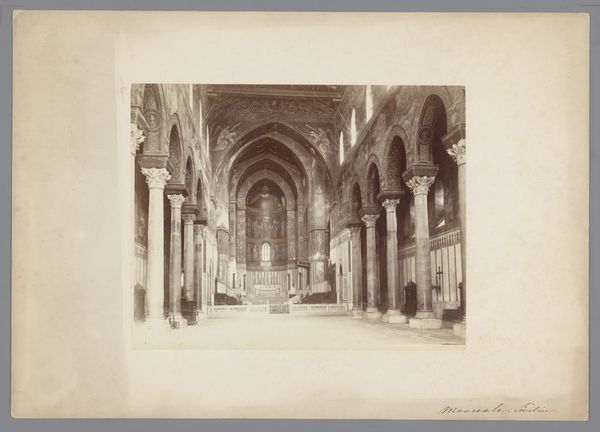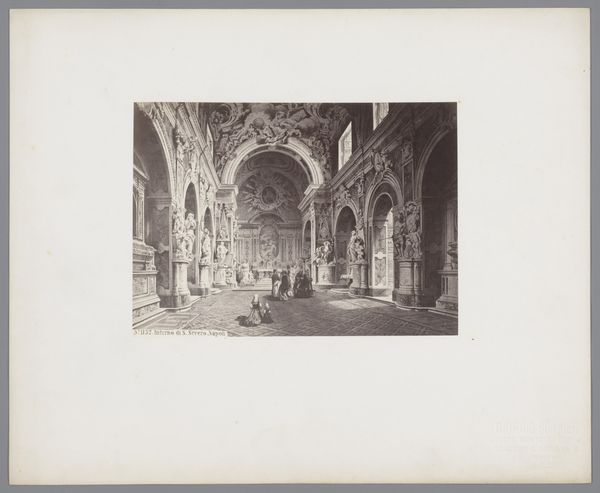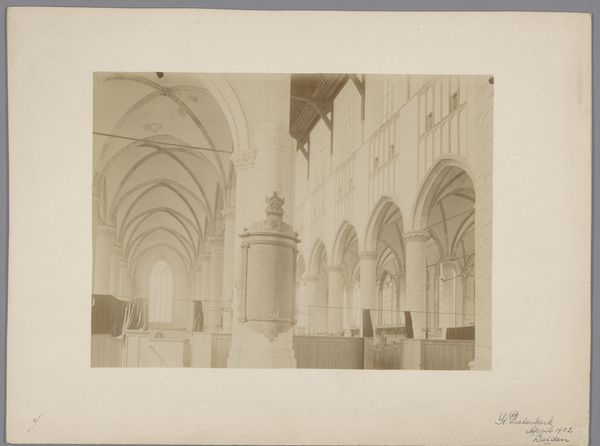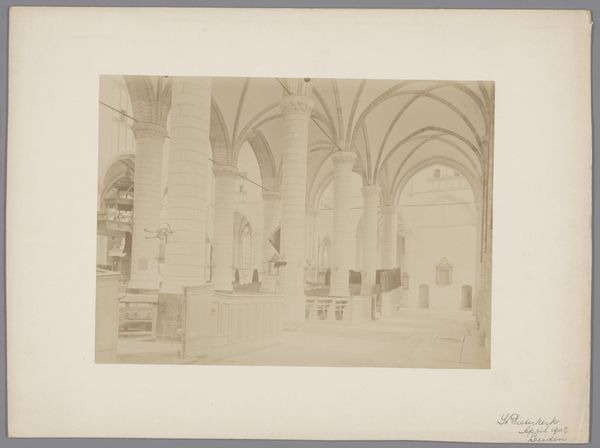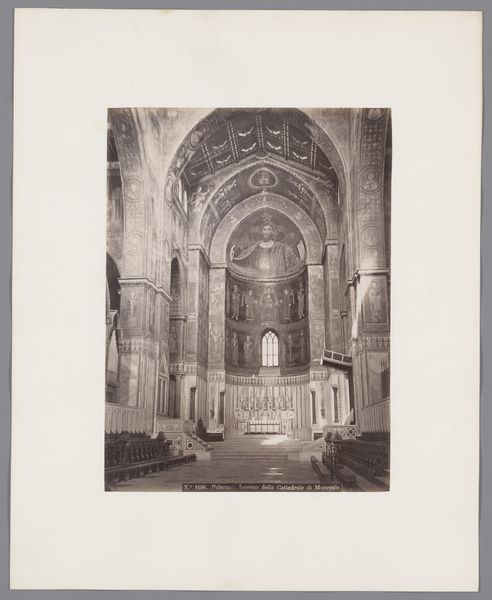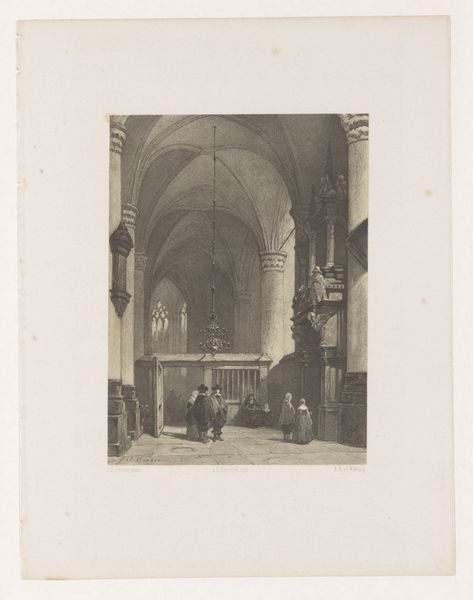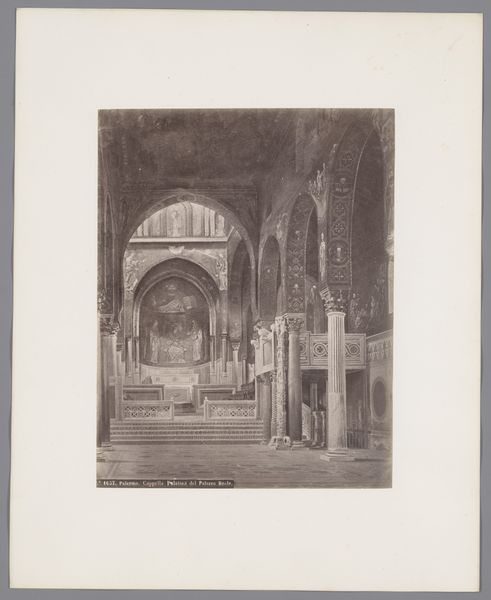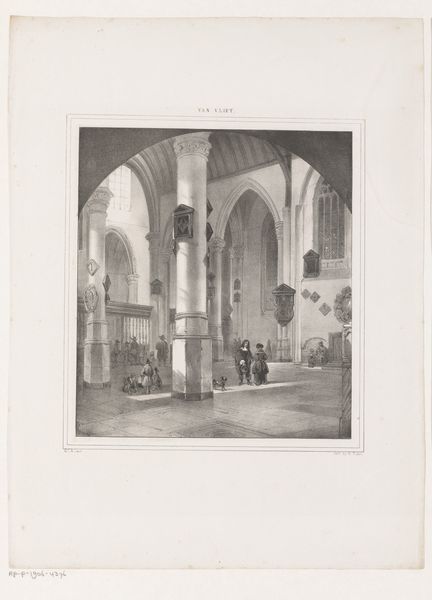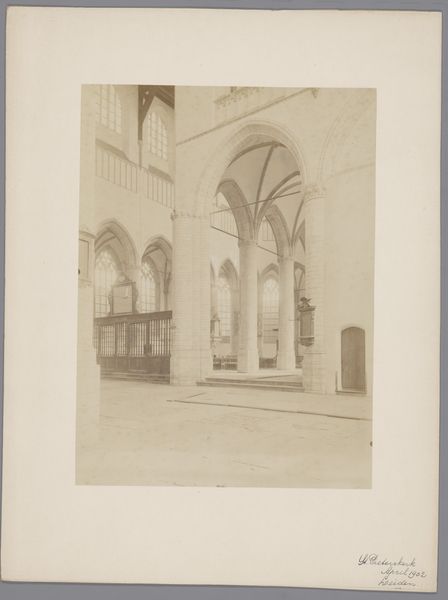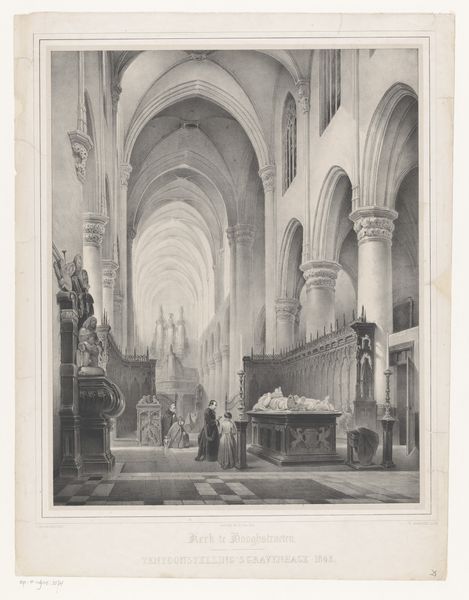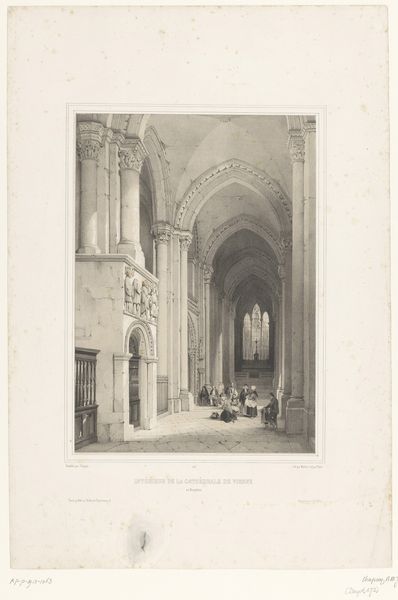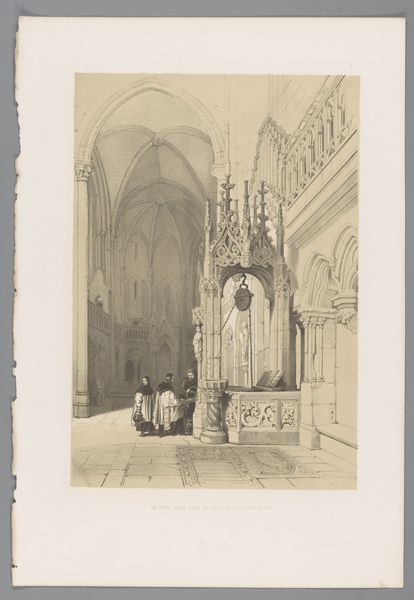
print, photography, gelatin-silver-print
# print
#
landscape
#
photography
#
ancient-mediterranean
#
gelatin-silver-print
#
italian-renaissance
Dimensions: height 318 mm, width 367 mm
Copyright: Rijks Museum: Open Domain
Curator: Looking at Giuseppe Incorpora's gelatin silver print, “Interior of the Cathedral of Monreale, Italy," dating from between 1856 and 1914, I'm immediately struck by the geometry of it. Those columns are incredibly strong and assertive. Editor: It feels overwhelmingly peaceful, almost cavernous in its echoing stillness. There's a palpable sense of history and faith ingrained in these walls, wouldn’t you agree? I am curious about how the light functions symbolically within the architectural space, leading to the apse with those icons and mosaic stories of redemption. Curator: Yes, but let's consider Incorpora's labor in producing this photograph. The gelatin silver process, in that time frame, necessitated meticulous darkroom work. Think about the resources involved: silver, glass plates, the photographer's deep knowledge of chemistry... Each element contributes to the final product we're analyzing here today. Editor: That's true. However, the photograph also speaks to a larger narrative, beyond Incorpora's individual effort. Observe how the Byzantine imagery embedded in the Cathedral serves as a direct visual link back to early Christianity, projecting its symbolism of divine authority through the medium of light and geometric patterns. Curator: And consider the colonial context. Italian photography in the late 19th century was used to document and classify a sense of national identity, but also to celebrate Italian dominance over archaeological and artistic treasures. Was Incorpora aware of being implicated within that system of control? Editor: Perhaps. The Cathedral itself is a complex tapestry of cultures. The Norman architecture melds Christian, Islamic, and Byzantine elements in the 12th century. Isn’t the composition itself an iconography for this intermingling and clashing? Curator: Possibly, though for me, that complexity speaks more to the layers of artistic and craft traditions and the materials employed by myriad craftspeople. These mosaics and building components involved an economy, and skilled laborers from diverse backgrounds were likely commissioned and thus became instrumental in the final appearance of what the artwork ultimately expresses. Editor: Looking again at Incorpora’s photograph, I am convinced of how strongly that sacredness translates, capturing an almost meditative quality. Thank you, it has been eye-opening to have seen it in this new light. Curator: Absolutely, it makes one wonder about the role photography played at this juncture in both preserving history and shaping public perceptions about history.
Comments
No comments
Be the first to comment and join the conversation on the ultimate creative platform.
